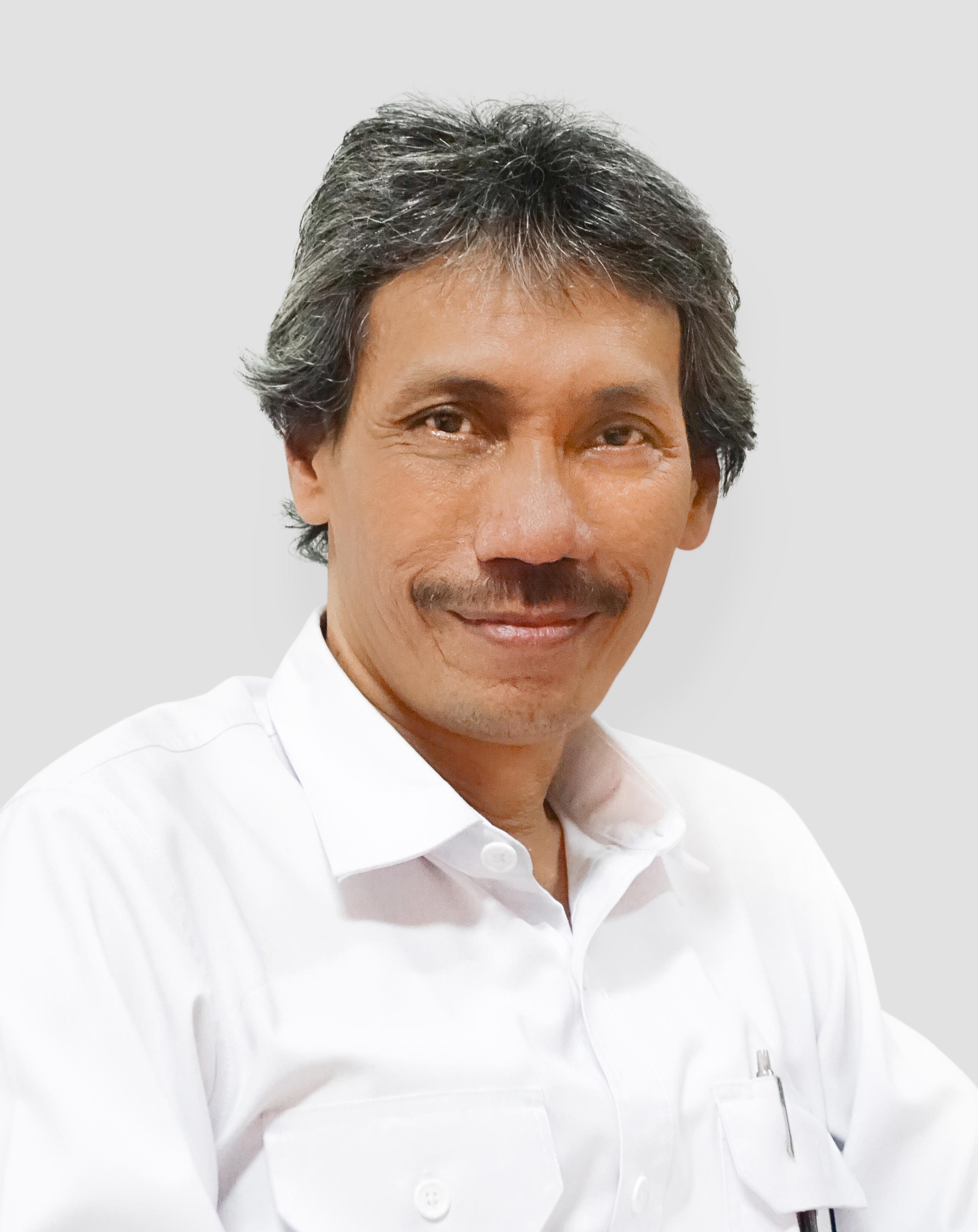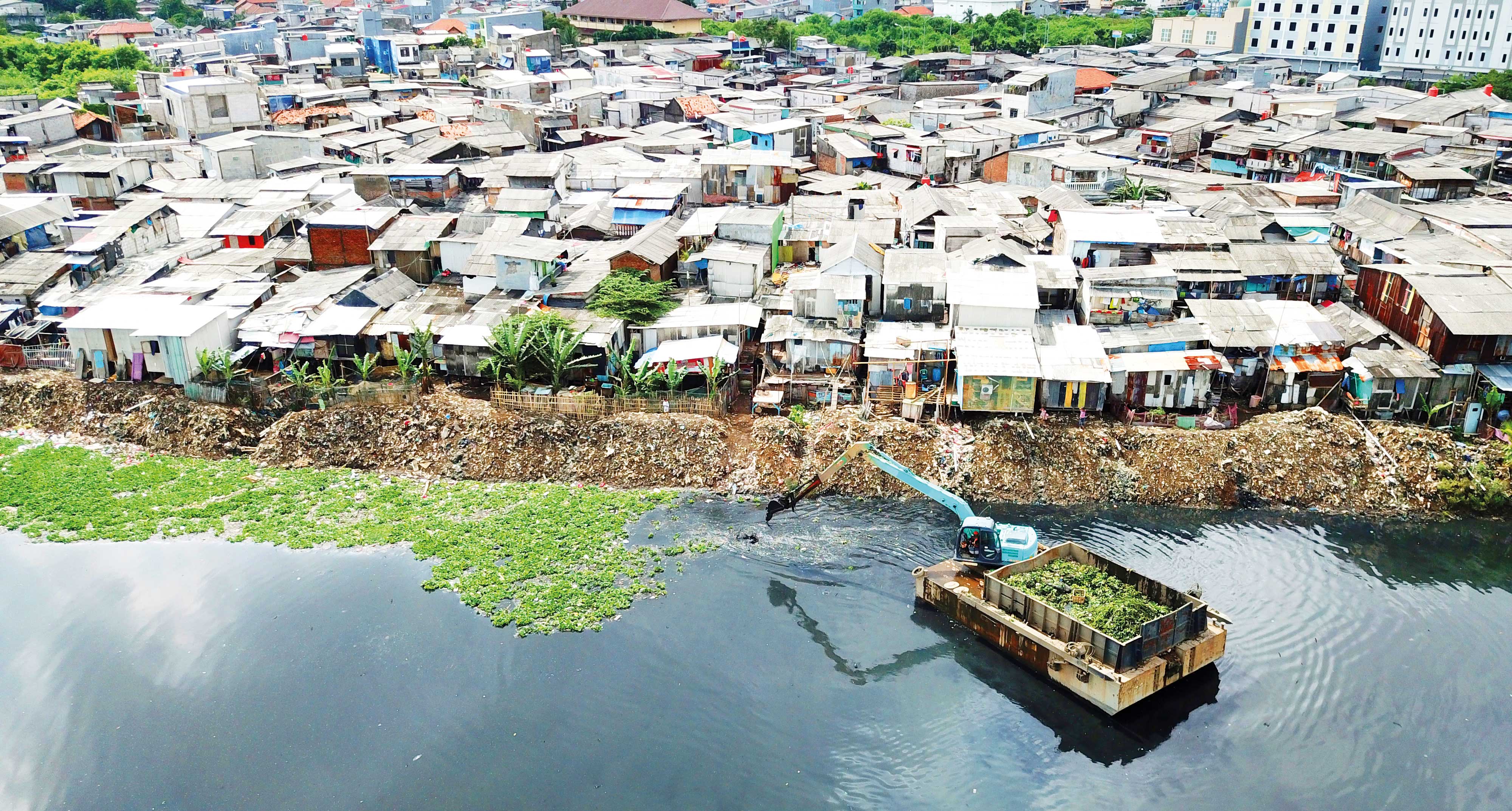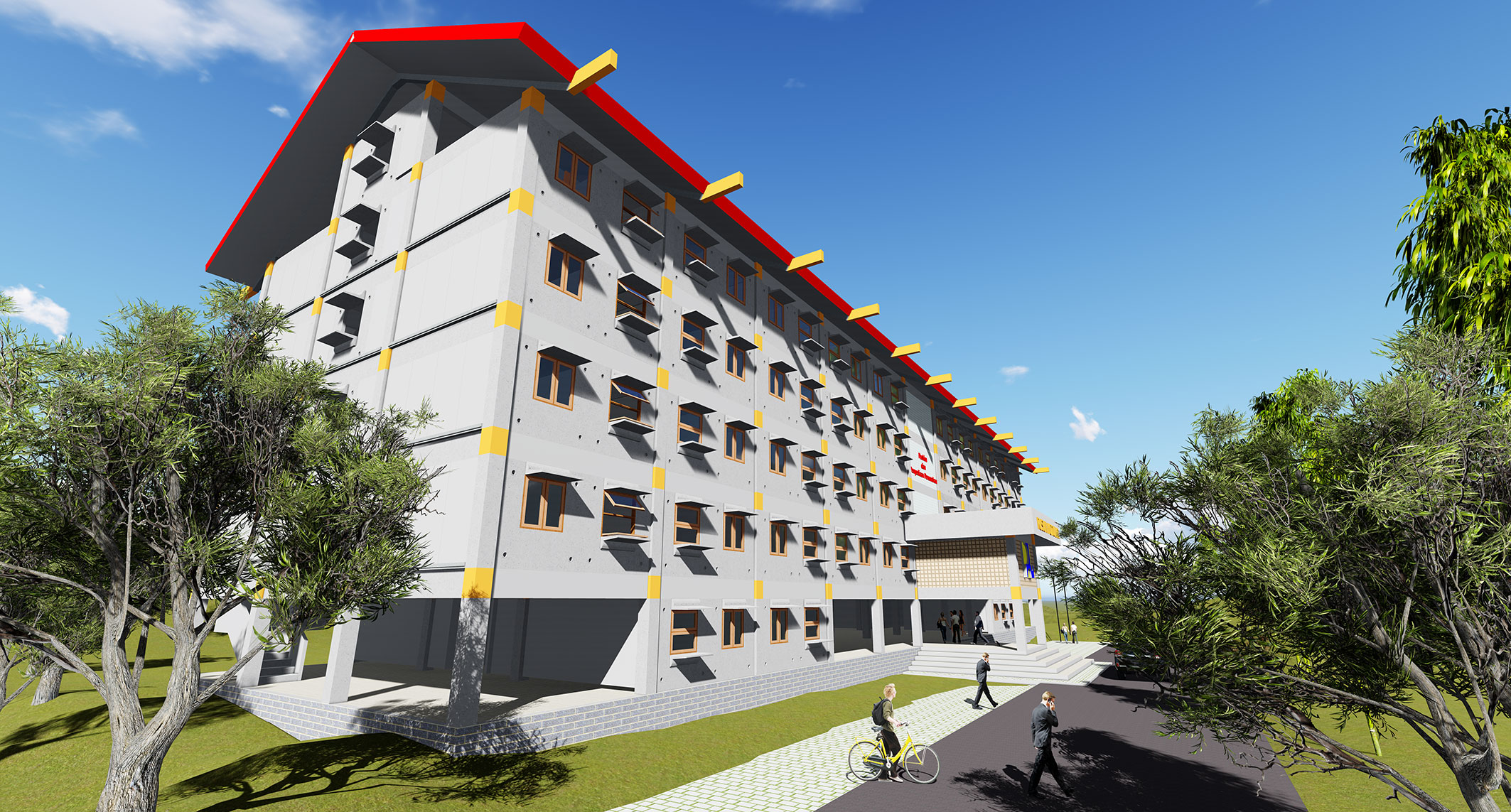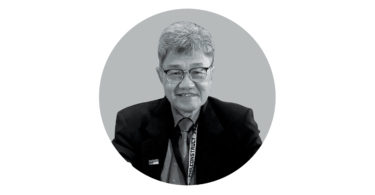 Head of Research Institute for Housing and Human Settlements, Ministry of Public Works and Housing, Prof Ir Arief Sabaruddin, CES shares his thoughts on planning and designing housing for the middle to lower-income People in Indonesia.
Head of Research Institute for Housing and Human Settlements, Ministry of Public Works and Housing, Prof Ir Arief Sabaruddin, CES shares his thoughts on planning and designing housing for the middle to lower-income People in Indonesia.
As an architecture student at Parahyangan Catholic University, Arief always read literature in the library of the Research Institute for Human settlements in Bandung. He realised that housing was a basic need that had to be used to enable the low income people (masyarakat berpenghasilan rendah, MBR). Upon graduation, he worked at the Research Institute, and a year later he was assigned to the Ecole Nationale des Travaux Public de l’Etat, Lyon, France, to deepen his knowledge of housing and settlements architecture.
What are the key housing and settlements issues for the low-income group in Indonesia today?
Housing problems in Indonesia are very complex and multi-dimensional, both on the supply and demand sides. On the supply side, there are land issues that are increasingly difficult, with increasing prices of land and building materials. On the demand side, the purchasing power of the people does not rise significantly, so there is a large gap between the housing price and the affordability of MBR.
This gives rise to various other problems, such as worsening residential and building quality, increasing backlog of houses, continually growing slum areas despite various programmes, misdirected subsidies, uninhabited subsidised houses, as well as environmental damage due to land conversion for housing purposes.

Aerial landscape of slum houses and an excavator on the lakeside in North Jakarta, Indonesia – Image by Shutterstock/Creativa Images
What are the main challenges for a housing and settlements architect?
The implementation of housing and settlements for the low-income people (MBR) has its own challenges for an architect. From the physical aspect, MBR housing has a smaller building and land area compared to middle to upper housing.
MBR housing is also closely related to very complex social, cultural and economic problems. MBR housing handling must pay attention to humanity aspects, which are essential characteristics of individuals. Families in the communities that will live in the housing and settlements must be part of the design considerations. The MBR housing design must prioritise the psychological, social and cultural aspects of the community before drawing the design lines of buildings and urban plannings.
A housing and settlement architect not only has the ability to design, but must also be able to understand the social, cultural and economic problems of the community, and the environment in a holistic manner. In addition, they must also be able to establish strong regulations.
From a variety of very complex problems from the demand sides and supply sides mentioned earlier, I am more focused on how to prepare appropriate technology that is able to solve quality problems, while being able to open jobs at the community level for small and medium enterpises. Various efforts are made through research and development activities to produce an appropriate technology that is innovative and environmentally sound. The innovative indicator used for a technology finding has three aspects: the cost must be cheaper, the quality must be better and the implementation time must be faster and have a longer life time compared to pre-existing technologies.
The implementation of public housing with the allotment for the MBR is essentially oriented towards solving social problems, instead of for profit. Hence, the role of the government must be greater than the private sector.
What is the importance of using appropriate technology in quality control?
One of reasons for backlogs is that houses are still being built by conventional methods, which takes at least 2.5 months for each house. The conventional construction approach makes quality control in the field difficult, so the building quality from the addressability aspect cannot be guaranteed, especially if there is a natural disaster. No wonder many buildings are destroyed during earthquakes, including the last earthquake in Lombok. These buildings collapse due to errors in detailing and the use of building materials that are not in accordance with the Indonesian National Standard (SNI).
Like it or not, Indonesia must immediately carry out mass production on housing development by abandoning conventional methods, starting with using a precast construction system, especially in the implementation of low-income housing.
This has been done by western countries in dealing with housing problems resulting from the Industrial Revolution. The design and approach of modernism at that time had indirectly caused many social problems, while ignoring the community’s social and cultural aspects in both regional planning and housing. We must learn from these experiences, such as using manufacturing systems to support the mass development acceleration, which actually also has several weaknesses, such as monotonous uniform buildings.
The Indonesian President has launched the National Movement of One Million Houses Development (GNPSR) to encourage acceleration through mass housing provisions. What has been done towards this end?
In 2002, the Research Institute for Human Settlements conducted a two-year research to provide acceleration solutions, such as a small precast construction system for simple houses, called instant simple healthy house (RISHA). RISHA technology was based on modular measures, where the technology can be used to provide landed and maisonette houses. Likewise, in the supply of public flats in the future must refer to modular sizes, so the acceleration process, quality control and prices will be more controlled.
Would public housing procurement, such as the ones in Singapore, be relevant for major cities in Indonesia?
The public housing approach is very effective when done in big cities, and for that we need to also follow these steps. But the problem is how to increase the role of local governments in the provision of housing, considering that Indonesia has a very wide area and has a cultural diversity. The richness of various cultures and geographical characteristics are contained in the form and value system found in the architecture of housing and settlements. National policies will not be able to reach these various cultures. Therefore, the local governments must have a broader role in housing arrangements in Indonesia.
For a long time, the government has not fully placed itself as a provider in the implementation of public housing. Instead, it has placed itself more as an enabler, providing support in the form of subsidised landed houses or flats, as well as assistance, such as subsidised land or utility infrastructure for private developers. As a provider, the government has built simple rental housing and special houses, such as housing for disaster victims or fishermen’s houses.
Generally, the public is very interested in the assistance of subsidised housing, because house prices are more affordable with the help of interest difference to 5 percent fixed for a 20-year tenure, with a 1 percent down payment.
However, subsidised lands are usually located far from the activity centre. To deal with this, the government is currently rearranging the zoning arrangements for areas that are still permitted to be built. In large cities on the island of Java, the construction of landed houses is no longer feasible and the development must be directed to vertical residential. The key to success for vertical residential development in Indonesia is the change in the mindset of people who have been adapted to living in a landed house.
What strategies need to be implemented to reorganise urban slum areas to become habitable?
Slum areas are a real result of a gap between urban development and the economic welfare of marginalised communities. Urban development should not just be about building iconic and modern buildings, but also about providing low-cost housing for urban communities that can be accessed by the MBR, either by way of rent or purchase.
Slum settlements are growing due to the unavailability of adequate public housing at affordable costs in urban areas. On the other hand, there has also been an imbalance between job availabilities in the villages compared with the cities, which trigger continuous urbanisation. At present, the urban population in Indonesia has reached more than 54 per cent, and is projected to reach 70 per cent in the next eight years. Thus, the need for housing in city areas continues to increase rapidly, while the land availability for housing is limited and prices continue to escalate. This triggers the growth of slums, where the MBR are compelled to build houses independently on marginal or abandoned land.
What is RISHA?
RISHA is a technology that is able to answer various housing and settlement development needs, both to build new housing and to organise slums. This technology can also be used for of disaster management, in the form of temporary and permanent housing, as has been done in the aftermath of the earthquake and tsunami in Aceh and North Sumatra in 2004.RISHA can also be used for other simple buildings, such as schools, health centres, religious buildings, and offices with a height of no more than two floors. This technology is also able to open new jobs in the small and medium business sector by involving the community. With RISHA technology, the implementation time of house construction can be faster. For example, the time needed to build a 36-square-metre house can be less than one week, compared to conventional construction methods, which require no less than 2.5 months.
The details about modular and RISHA as part of the rapid construction for emergency hospitals can be read on this link.
There are three characteristics of slums in Indonesia: slums on marginal land, state land and owned land. The only solution for those living on marginal land (such as river banks and rail roads) is to relocate them to public flats with the help of rental subsidies (Rusunawa). Slum areas on state land that are still possible to be built must be carried out by adopting an urban renewal approach, so the carrying capacity of the area increases and can accommodate people from slums on marginal land.
Meanwhile, slums on owned land usually occur in old residential areas that have been owned by the MBR community for generations, but the area’s physical characteristics are not able to keep up with the city’s development. In these locations, there has been an increase in density that is not matched by adequate facilities and infrastructure as a condition of habitable housing. In such cases, the most effective approach is to arrange partnership programmes, where the asset owner (in this case the MBR community) is involved in investment with the land as the main capital, and investors build up the both buildings and infrastructure. This will increase the region’s value and spur higher productivity.
This concept has been piloted in the Cigugur Tengah area, Cimahi, West Java. Although the results are not as expected, but this concept is believed to be able to benefit the community’s welfare and allow them to get passive income.
The handling of slum areas is not enough to be limited to physical repairs; far more important is the improvement of stakeholders’ social psychology. This means that there must be a change in behaviour as a key indicator of success in the slum area. Therefore, the improvement of slum areas is a process that goes on and on, as the dynamics of life become increasingly complex every day.
What is your biggest hope for public housing and settlements in Indonesia?
My big hope is to realise the community welfare through the provision of public housing, which is a mandate from the opening of the 1945 Constitution. Housing as one of the basic needs has an important role in realising people’s welfare, because through a healthy home, a family can live and grow healthily, producing a more prosperous family. With a housing backlog reaching 13 million family cards in in 2015, that means there were around 52 million people in Indonesia who did not have a house in the city area.
What is MBR?
MBR refers to the low-income people (masyarakat berpenghasilan rendah). They can be grouped into three levels: top MBR, middle MBR and bottom MBR. Referring to the Housing and Settlement (PKP) Law No. Article 54 of 2011, the government is obliged to fulfil the housing needs of the MBR.Government subsidy assistance for MBR who will own a house is provided in the form of housing ownership credit subsidies, interest difference subsidies, and/or advance cash assistance. As for the lower MBR and the people who are below the poverty line, the government provides stimulant assistance for self-help homes in the form of assistance to repair uninhabitable houses.
To realise my hope, we must be able to reposition policies in the implementation of housing. It is not enough just to carry out routine activities, but we need to make policy breakthroughs supported by a strong implementation system, so all parties can control it. Housing provision for the MBR is not a business but a social activity where the presence of the government is very necessary, because its implementation will require a lot of resources.
The government’s presence must be supported with the increased role of the National Housing Authority (Perumnas), which is specifically tasked with providing housing for the MBR, especially for those who are below the poverty line. Meanwhile, the role of private developers is more directed to the middle and upper MBR, while the government acts as an enabler.
On the technical regulation side, the government must be able to guarantee every citizen gets a residence to live. To make it happen, the government must have adequate stock of housing in all regions of Indonesia that can be inhabited by all communities with subsidy assistance in rent. The pattern of providing the Rusunawa must be a priority.

 Malaysia
Malaysia Hong Kong
Hong Kong Singapore
Singapore Tiếng Việt
Tiếng Việt ประเทศไทย
ประเทศไทย












